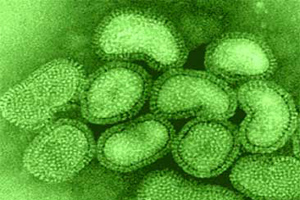International team explores evolution of avian influenza

An international research team has shown how changes in one of the older strains of avian influenza helped create the novel H7N9 strain that has killed more than 100 people in China since 2013.
Led by scientists at St Jude Children’s Research Hospital, Tennessee, and the China Agricultural University, Beijing, the work focused on the H9N2 chicken virus, which causes egg production to drop and leaves chickens vulnerable to fatal co-infections.
Researchers used whole genome sequencing to track the evolution of H9N2 between 1994 and 2013.
The analysis showed that the genetic diversity of H9N2 viruses fell sharply in 2009. Thereafter, it emerged as the predominant subtype, thanks to its genetic makeup that allowed it to flourish, despite widespread vaccination of chickens against H9N2 viruses.
Evidence in the study suggests this set the stage for the emergence of the H7N9 avian virus that has caused two outbreaks in humans since 2013, with 375 people falling ill and 115 confirmed deaths.
The infected chickens likely served as the “mixing vessel” where H9N2 and other avian flu viruses from migratory birds and domestic ducks swapped genes, researchers said. The resulting H7N9 virus included six genes from H9N2.
“Sequencing the viral genome allowed us to track how H9N2 evolved across time and geography to contribute to the H7N9 virus that emerged as a threat to human health in 2013,” said Robert Webster from St Jude’s Department of Infectious Diseases.
“The insights gained from this collaboration suggest that tracking genetic diversity of H9N2 on poultry farms could provide an early warning of emerging viruses with the potential to spark a pandemic,” he added.
The analysis also pointed to the role of vaccines, which lost effectiveness over time and made it easier for the virus to escape detection.
The research appears in the online edition of the scientific journal Proceedings of the National Academy of Sciences.
Source: Poultry World












